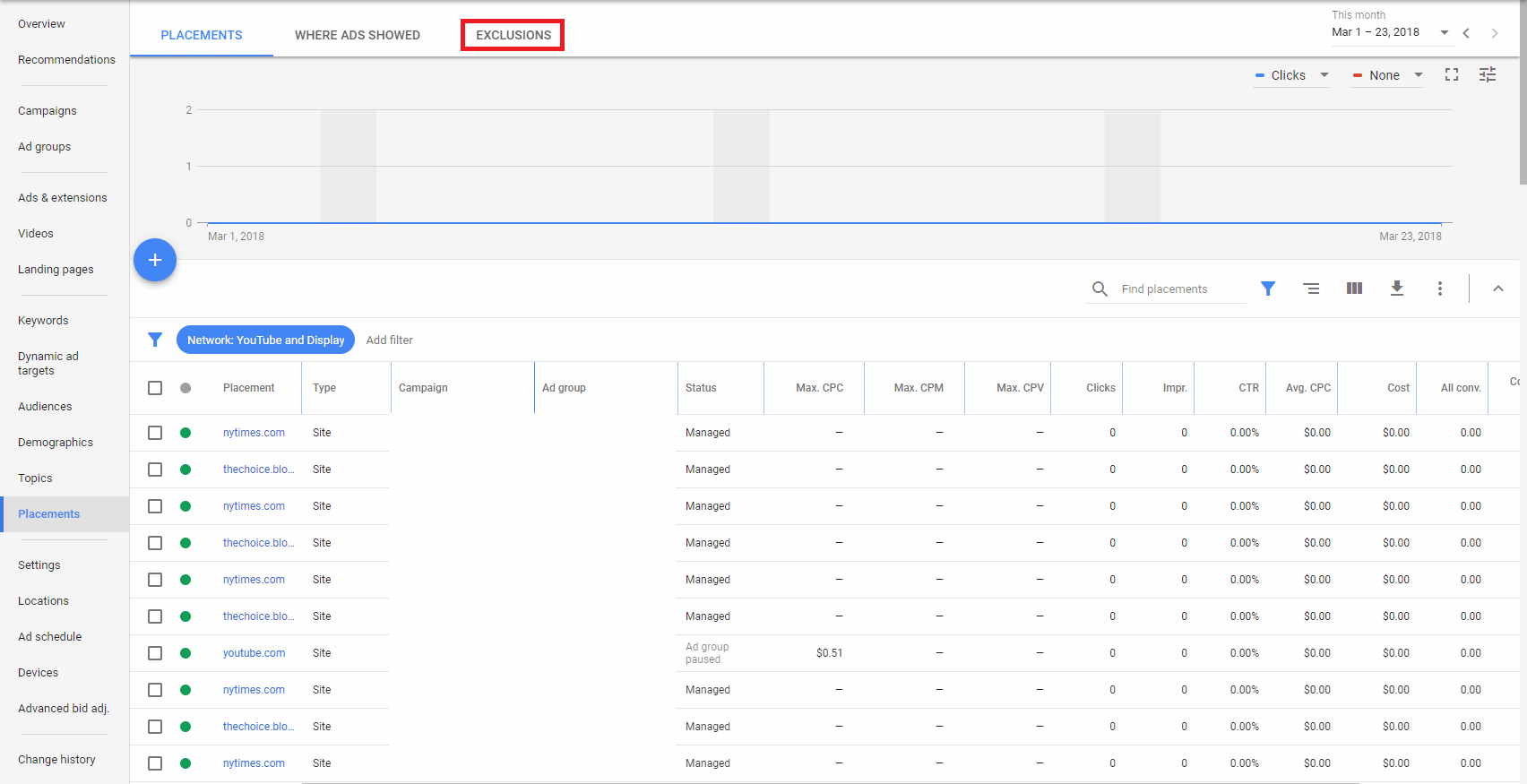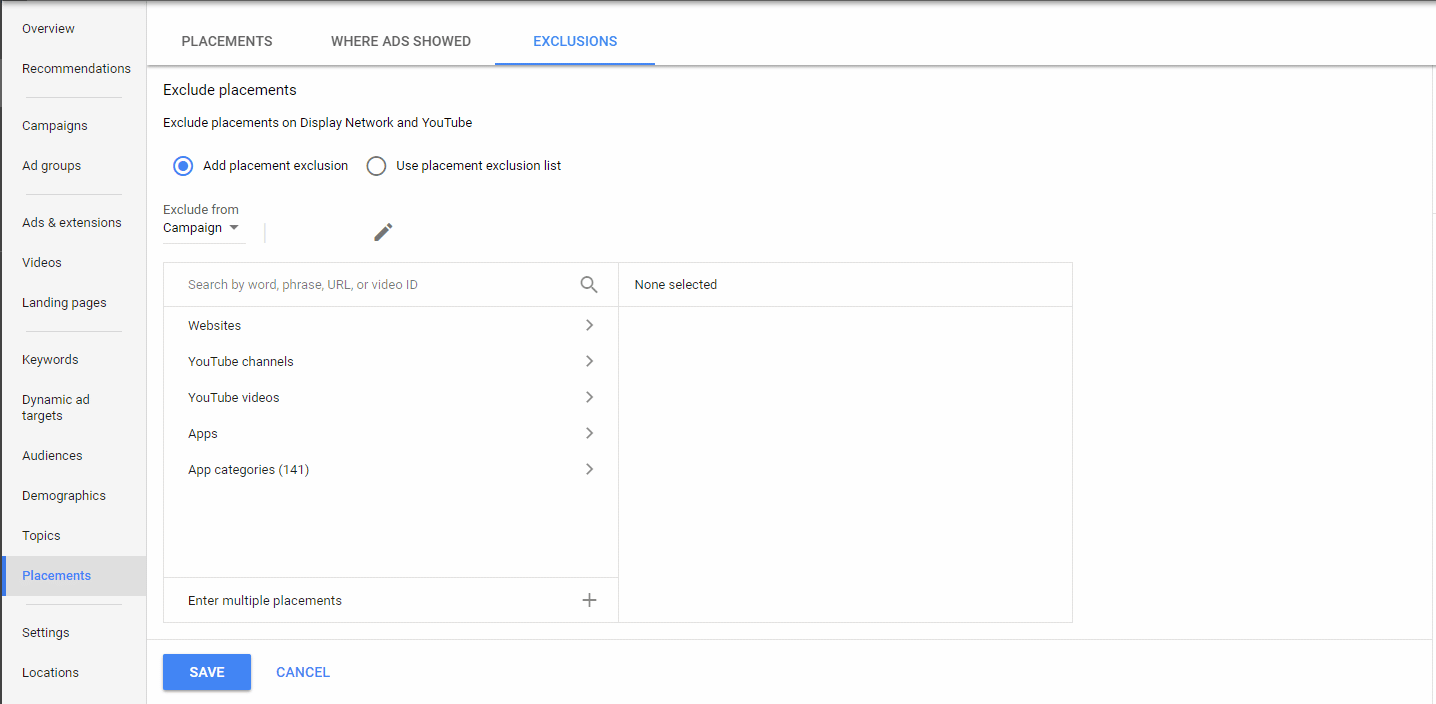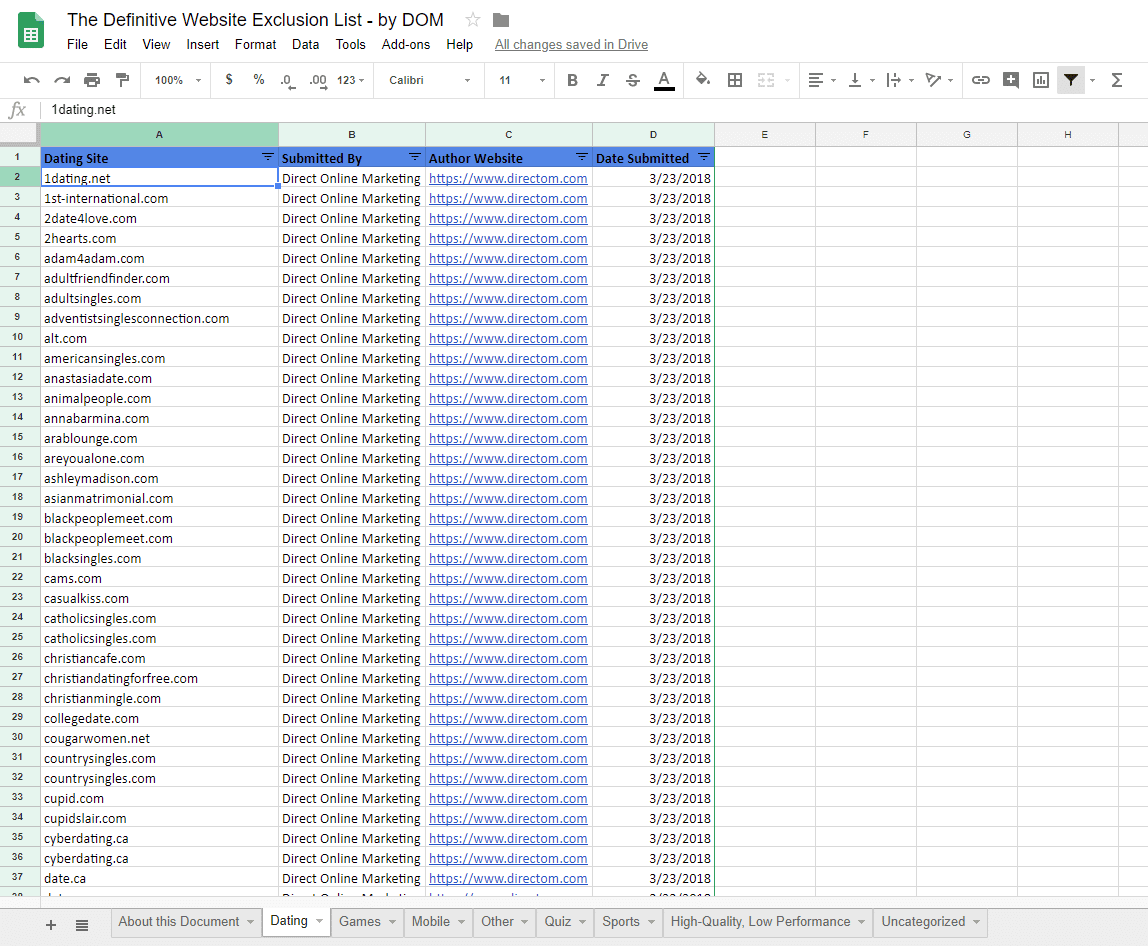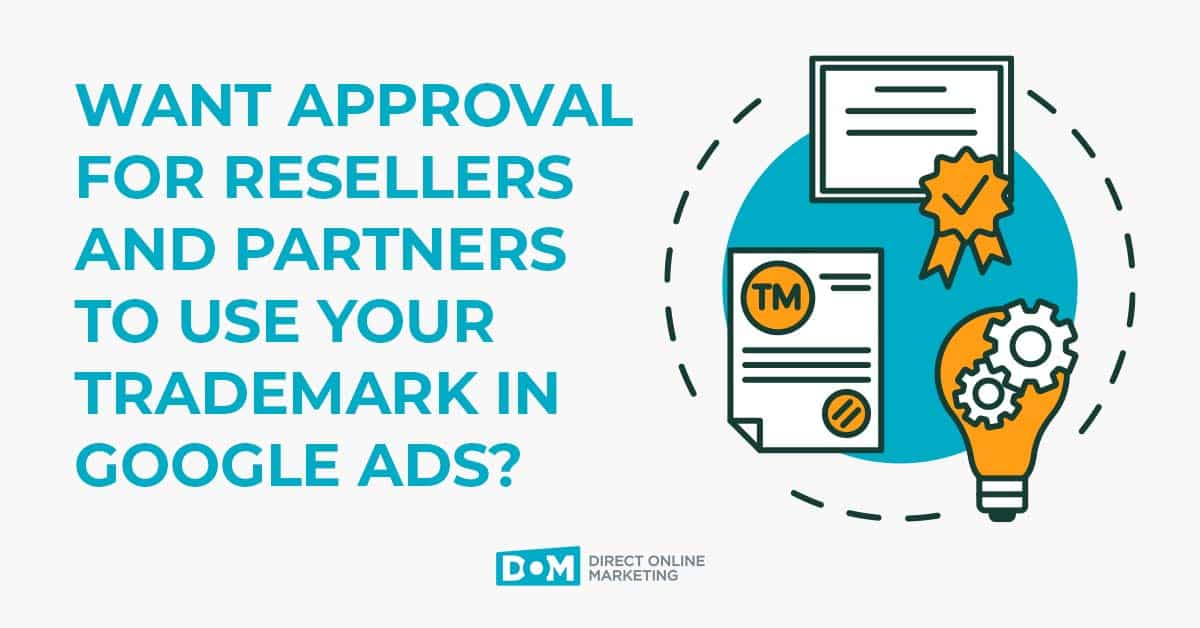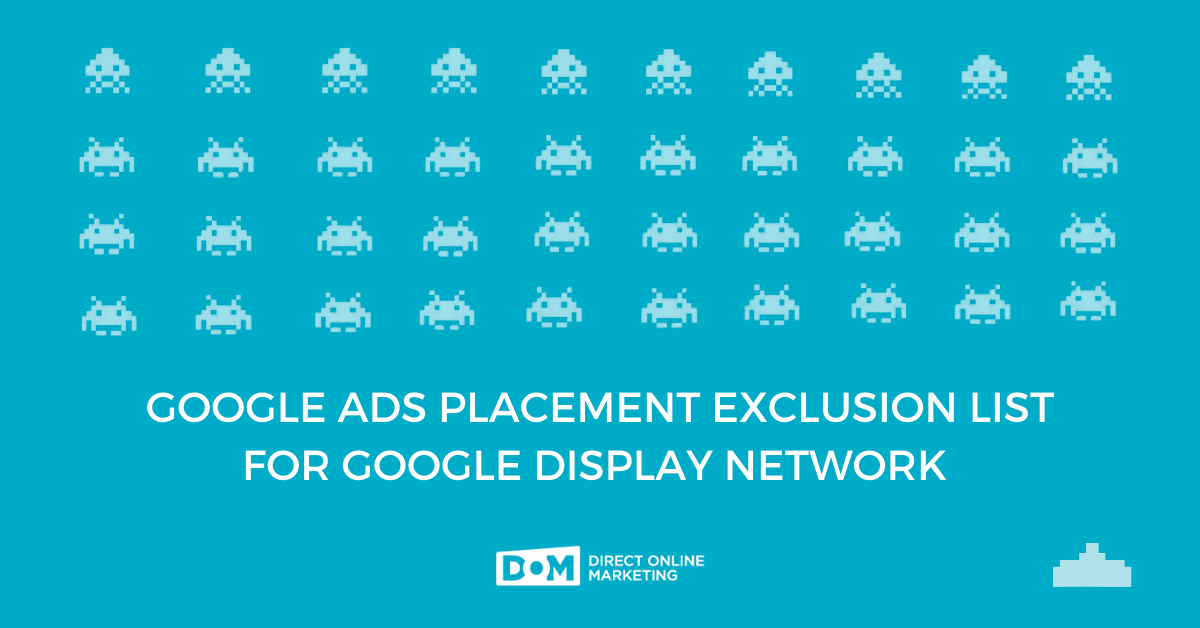
With more than a million websites across the globe, the sheer size of the Google Display Network is one of the main reasons why display and retargeting campaigns are such strong marketing tools. Spanning across a myriad of different topics and interests, reaching a target audience based on what matters to them has never been easier.
A high-performing campaign leverages the Google Display Network (GDN) by serving highly targeted ads to users somewhere across the mammoth network of websites and publishers. Odds are, if a user is seeing a display or retargeting ad, they are seeing it on a website in the GDN.
However, there are thousands of websites with which brands do not want to be associated or use for their ads. This is why it’s a good idea for advertisers to consider blocking or excluding certain websites for placements of their ads on the Google Display Network.
Why Exclude Some Websites on the GDN?
It may seem counterintuitive that blocking placements on some websites would lend to better campaign performance, but there are instances where blocking placements can be extremely beneficial. There are two main reasons why advertisers want to be excluding websites on the Google Display Network.
1. Spammy, Inappropriate, or Unrelated Websites
Considering how large the Internet is, it’s pretty common knowledge by now that no matter what a person would be interested in, there is likely a large community and hundreds of websites dedicated to that interest. This covers a gamut of topics from the very wholesome to the very “mature.”
Advertisers may not have the luxury to consider and evaluate every single website on the GDN, but serving ads on a spammy, inappropriate, or unrelated website can have unintentional consequences. For example, say a local butcher shop sets up a display campaign, and several of its ads are placed on websites whose audiences are passionate about vegan lifestyles and animal rights.
2. Saving Money on the GDN
Besides avoiding placements because of a mismatch for relevancy or inappropriate misrepresentations of a brand, the big reason for blocking placements on the display network is to save money. When targeting is dialed in and a retargeting campaign is set up correctly, advertisers can reduce costs by eliminating irrelevant websites.
In this example, let’s say that a SaaS software company runs a display campaign but they didn’t exclude a whole ton of websites geared towards teenaged and college-aged gamers. These placements end up being tossed away and eat away at the ad budget because they don’t contribute meaningful conversions to the campaign.
By eliminating a whole slew of websites, advertisers leveraging the GDN can ultimately get more out of their campaigns with lower costs if they refine where ads are being placed.
How to Block Placements on the GDN
Seasoned digital marketers may know about website exclusions, but it can be easily overlooked by less experienced users of Google Ads.
At the most basic level, placements can be excluded by opening your campaign in Ads and clicking on the “Placements” tab. From there, hover the mouse over the top navigation and click on the “Exclusions” tab.
Once in this new area, exclusions can either be selected by websites, YouTube channels and videos, apps, or by entire app categories.
It’s important to keep in mind that Ads’ exclusion tools don’t cover every website worth excluding from a campaign, and there are thousands it will miss. That is, of course, if you’re blocking placements on low-quality or costly GDN websites with a massive list of URLs. Using an exclusion list can be a mighty weapon for any digital marketer working inside the Google Display Network — one you’ll want to come back to over and over again.
The Definitive Website Exclusion List (Free Resource!)
For years, Google Ads professionals have either had to resort to creating their own exclusion lists or borrowing lists of URLs from fellow marketers. But the team at Direct Online Marketing wanted to go further and create the exclusion list to end all exclusion lists. Which is why we’re proud to provide:
This list is the culmination of our 12 years as an agency running campaigns for clients in Google Ads. To supplement our internal list, we also took every list of website exclusions we could find online and compiled it all in the above Google Spreadsheet. At a stunning 70,000+ website URLs, this list is quite comprehensive as it covers such categories as dating, mobile, gaming, quizzes, sports, and more. A good number of the websites have been painstakingly evaluated by our team. 2021 Note: It might be a few years old, but this list is still pretty comprehensive. And hey, it’s free!
Because this list can be found as a shareable Google Doc, we encourage you to share this with anyone who would find it useful.
Notes About High-Cost, Low-Performing Categories
If you’ve taken a look at our list, you’ve probably noticed how we broke out several website categories.
High-Cost, Low-Performing – One of our categories addresses a large number of high-quality and reputable websites and publishers (such as The New York Times, CNN, etc.). We’d generally recommend excluding or considering blocking placements on some of these sites for direct advertisers. The placements may make sense if you’re using GDN just for brand awareness and reach. Because exclusions can be a good method of keeping ad costs down, blocking placements on high-quality websites can help stretch budgets a lot farther.
Final Thoughts
Using the behemoth Google Display Network is how marketers are finding success with display and retargeting campaigns, but not every website is a good opportunity for advertising. By leveraging our comprehensive list of websites to exclude ad placements, advertisers can easily avoid the negatives of placing ads on inappropriate websites and reduce costs associated with their campaigns.
For those of you who share our vision in making this list the best it can be, we thank you and welcome any submissions.
To get more information on this topic, contact us today for a free consultation or learn more about our status as a Google Partner Agency before you reach out.
